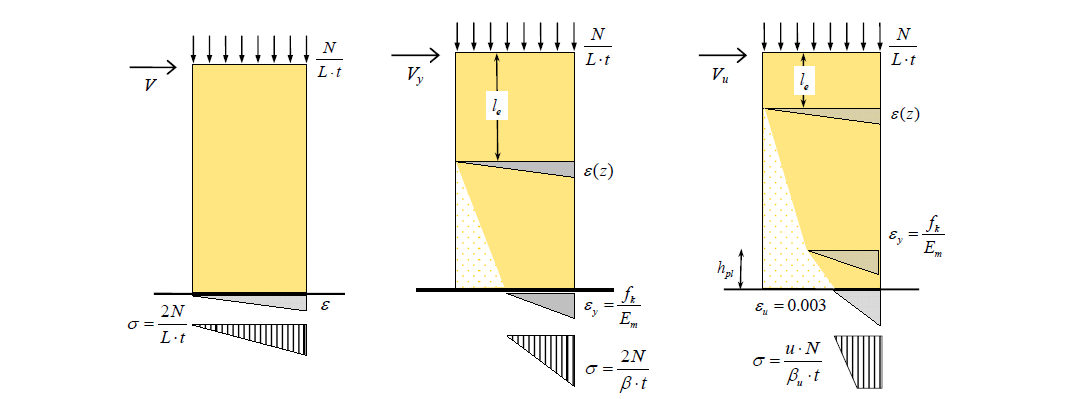1 Professor, DICAM Department, University of Bologna, Bologna, 40136, Italy, andrea.benedetti@unibo.it
2 Ph.D. Candidate, Universitat Politècnica de Catalunya, Barcelona, Spain, lbenedetti@cimne.upc.edu
ABSTRACT
Assessment of the load displacement curve for masonry walls is a key ingredient in all the safety verification formats for seismic analysis. Available numerical methods for the largest part use a spatial discretization based on a finite element representation in terms of beam, membrane or shell elements. In order to include the basic features of the masonry material, nonlinear plastic or damage constitutive models can be selected. It is however well known that rich constitutive models require an increasing number of constitutive parameters, which usually are hardly assessed in practice. Moreover, heterogeneous masonry textures do not allow experimental testing on small specimens so that data can be only inferred from nondestructive techniques.
In fact, the real safety analyses performed in engineering offices rarely exit from the standard Mohr-Coulomb plasticity model [1, 2]. If the biaxial crushing failure is not included in the model through a cap closure, some problems could emerge from the interaction of the flexural and shear collapse modes. In particular, the formation of a diagonal resisting strut in panels acted on by overturning forces could produce a shear over strength due to a biaxial compression state.
By using standard rules evaluating the shear resistance of cracked sections it is however possible to check nonlinear load displacement curves in order to detect premature shear failures along the flexural response curve. By this way it is possible to build up response curves which include shear failure and reduced ductility even if the finite element software has only basic plasticity options. The comparison of various wall models allow a better understanding of the limits of advanced nonlinear packages in the field of masonry behaviour under combined loading.
KEYWORDS: masonry wall, in plane loading, shear resistance, plasticity
387.pdf



